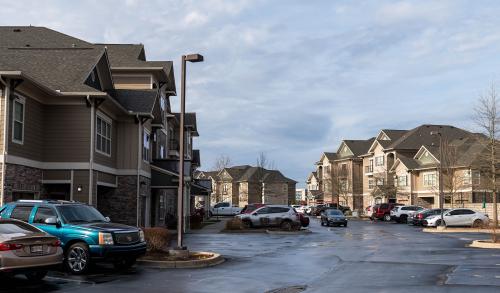I. Introduction and Summary of Conclusions
This paper is a follow-up to one I prepared last year on the decline of manufacturing in the Buffalo area. That paper detailed the effects of national, regional, and local forces on manufacturing activity in Buffalo over the past fifty years. Many of the root causes of Buffalo?s persistent decline are common to all of upper New York and the Northeast in general. U.S. manufacturing has been moving southward and westward for decades. This paper will not revisit all of that ground. Rather, I will attempt to identify what Syracuse has in common with Buffalo and other upstate metropolitan areas and how it differs from them.
The major conclusions of this paper may be summarized briefly:
Manufacturing’s share of the overall U.S. economy has declined steadily for the last 50 years, but the decline in the Northeast—the Middle Atlantic and New England Census Regions—has been much more precipitous.
Syracuse’s decline as a manufacturing center has not appreciably greater than the general decline in manufacturing throughout the Northeast in general or New York State in particular.
Metals-related manufacturing continues to be a very large share of U.S. manufacturing, Like Buffalo, Syracuse historically had a disproportionate share of its manufacturing employment concentrated in metals-related (principally, machinery and electrical equipment) manufacturing, and, much like Buffalo, steadily lost employment in these activities over the late 20th century.
Syracuse’s manufacturing sector was not any more diversified than most upstate metropolitan areas 50 years ago, but it is much more diversified today, principally because of the loss of employment in machinery industries.
Unlike, Buffalo, Syracuse has been fortunate not to have had two very large employers that could no longer compete in their industry (steel) and therefore had to close their doors—in Buffalo and elsewhere. Most of Syracuse’s large employers remain healthy.
Given the heritage of unionization in the Middle Atlantic Region in general, most upstate metropolitan areas do not attract large new manufacturing plants unless they are built by firms already in residence. Surprisingly, several years ago, the Syracuse area attracted a large, successful new steel minimill, Auburn Steel, which remains non-union. It is not likely to attract many more such facilities in the future.
Syracuse has no apparent comparative advantage in the new high-technology industries, such as computers and electronics; nevertheless, several high-technology firms, such as Lockheed-Marietta and Biophan, have manufacturing facilities in the Syracuse MSA that provide considerable employment.



